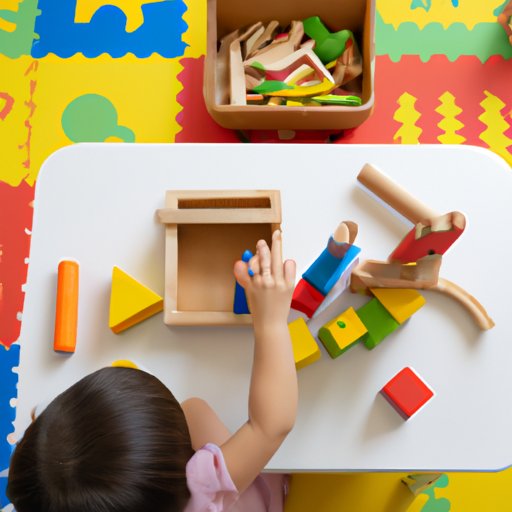Introduction
Imaginative play is an important part of every child’s development. It helps them learn to interact with the world around them and express their feelings and thoughts. But when do toddlers start engaging in imaginative play? In this article, we will explore the different stages of imaginative play in toddlers and discuss the benefits of imaginative play for their development.
Exploring the Different Stages of Imaginative Play in Toddlers
Imaginative play is a vital part of early childhood development that begins when babies first start exploring the world around them. As they grow older, they become more aware of themselves and the people and objects around them. This is when they begin to engage in imaginative play.
When Does Imaginative Play Begin in Toddlers?
Imaginative play typically starts around 18 months of age. At this age, toddlers are starting to understand the difference between fantasy and reality, and they can use their imagination to create stories and scenarios. They may also start pretending to be other people or animals, or engaging in pretend play with toys.
How Does Imaginative Play Develop Over Time?
As toddlers get older, their imaginative play becomes more complex. They may start making up stories and playing out roles with other children. By 3 or 4 years of age, they may start creating entire worlds where they can act out different scenarios. As they continue to develop, they may start using props and costumes to further enhance their imaginative play.
How to Encourage Imaginative Play in Your Toddler
Encouraging imaginative play in your toddler can help them develop the skills they need to succeed in life. Here are some tips for encouraging imaginative play in your toddler:
Creating a Space for Imaginative Play
Creating a safe space for your toddler to explore their imagination is essential. This could be a dedicated area in your home or a designated area outside. Make sure the space is free from distractions and full of interesting objects and toys that your toddler can use to create stories and scenarios.
Providing Toys and Materials for Imaginative Play
Providing your toddler with toys and materials specifically designed for imaginative play can help spark their creativity and encourage them to explore their imagination. Look for toys that allow your toddler to create stories and scenarios, such as dolls and action figures, dress-up clothes, and building blocks.
Engaging in Imaginative Play with Your Toddler
Engaging in imaginative play with your toddler can help them feel comfortable expressing their thoughts and feelings. Allow your toddler to take the lead and follow their cues. Ask questions about what they’re doing, and provide support and encouragement as they explore their imagination.
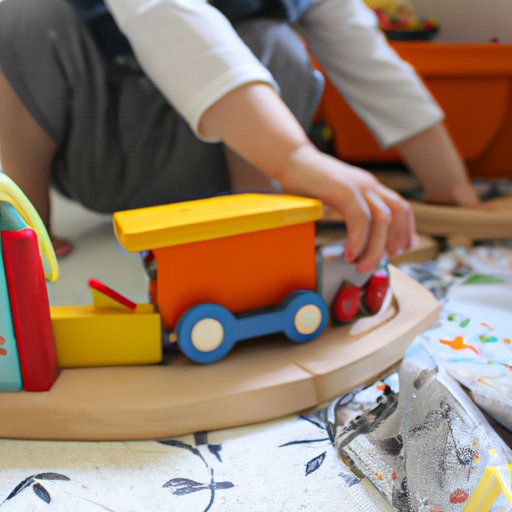
The Benefits of Imaginative Play for Toddlers
Imaginative play provides many benefits for toddlers, including cognitive, social, and emotional development. Here are some of the benefits of imaginative play for toddlers:
Cognitive Development
Imaginative play helps toddlers develop problem-solving skills, as they must use their imagination to figure out how to solve problems and create stories. It also helps them develop language skills, as they use language to express their ideas and feelings.
Social Development
Imaginative play allows toddlers to practice important social skills, such as sharing, taking turns, and cooperating with others. It also helps them learn how to negotiate and resolve conflicts in a positive way.
Emotional Development
Imaginative play allows toddlers to express their emotions and explore their feelings in a safe environment. It can help them learn to identify and manage their emotions, and can even help reduce stress and anxiety.
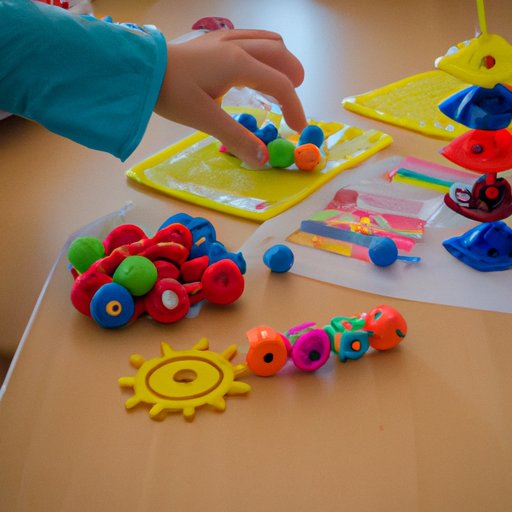
Tips for Stimulating Imaginative Play in Young Children
Encouraging imaginative play in young children can help them develop the skills they need to succeed in life. Here are some tips for stimulating imaginative play in young children:
Ask Open-Ended Questions
Asking open-ended questions can help stimulate your child’s imagination. For example, instead of asking “What do you want to play?”, ask “What kind of story do you want to tell?” or “What do you think the characters should do next?”.
Allow for Unstructured Play
It’s important to allow for unstructured playtime so your child can explore their imagination without feeling pressure to perform. Encourage your child to make up their own games and stories and give them freedom to explore their creative ideas.
Use Role-Playing Games
Role-playing games can be a great way to encourage imaginative play in young children. Choose games that allow your child to explore different roles and scenarios, such as pretend restaurant, doctor’s office, or grocery store.
Understanding the Developmental Milestones of Imaginative Play
Imaginative play progresses through several developmental stages. Here are some of the milestones of imaginative play:
Symbolic Thinking
At around 12 months of age, toddlers start to understand symbols. This means they can understand that objects can represent other things, such as a toy phone representing a real phone.
Pretend Play
By 18 months of age, toddlers start to engage in pretend play. This is when they start to use objects to represent something else, such as pretending a block is a car.
Storytelling
By 3 or 4 years of age, toddlers start to engage in storytelling. This is when they start to create stories with characters, settings, and plotlines.
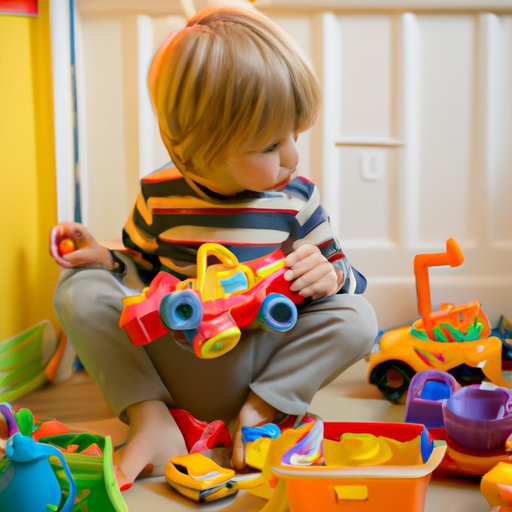
Identifying Signs of Imaginative Play in Toddlers
There are several signs that can help identify when toddlers are engaging in imaginative play. Here are some signs of imaginative play in toddlers:
Referencing Inanimate Objects as “People”
One sign that your toddler is engaging in imaginative play is if they start to refer to inanimate objects as “people”. For example, they might call their stuffed animal “mommy” or their toy truck “brother”.
Engaging in Pretend Play
Another sign that your toddler is engaging in imaginative play is if they start to engage in pretend play. Look for signs of pretend play, such as talking to their toys or acting out different roles and scenarios.
Making Up Stories
If your toddler is making up stories and creating their own narratives, this is another sign that they are engaging in imaginative play. Look for signs of storytelling, such as narrating events and creating characters.
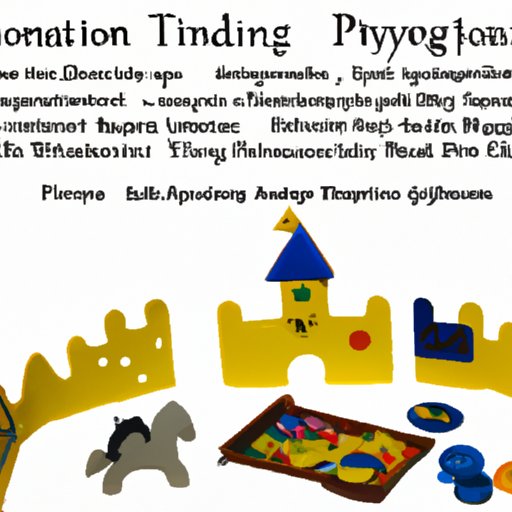
Understanding the Role of Imaginative Play in Early Childhood Development
Imaginative play is an important part of early childhood development. Here are some of the ways imaginative play can help your child develop:
Building Communication Skills
Imaginative play can help your child develop important communication skills, such as speaking, listening, and understanding. Through imaginative play, they can practice expressing their thoughts and ideas and understanding the ideas of others.
Developing Problem-Solving Skills
Imaginative play can also help your child develop problem-solving skills. Through imaginative play, they can practice coming up with solutions to problems and figuring out how to navigate difficult situations.
Enhancing Creativity
Imaginative play can help your child develop their creativity. Through imaginative play, they can explore new ideas and find unique solutions to problems.
Conclusion
Imaginative play is an important part of early childhood development. It helps toddlers develop cognitive, social, and emotional skills that are essential for success in life. Understanding the different stages of imaginative play and how to encourage it in your toddler can help ensure they get the most out of their playtime.
(Note: Is this article not meeting your expectations? Do you have knowledge or insights to share? Unlock new opportunities and expand your reach by joining our authors team. Click Registration to join us and share your expertise with our readers.)
